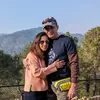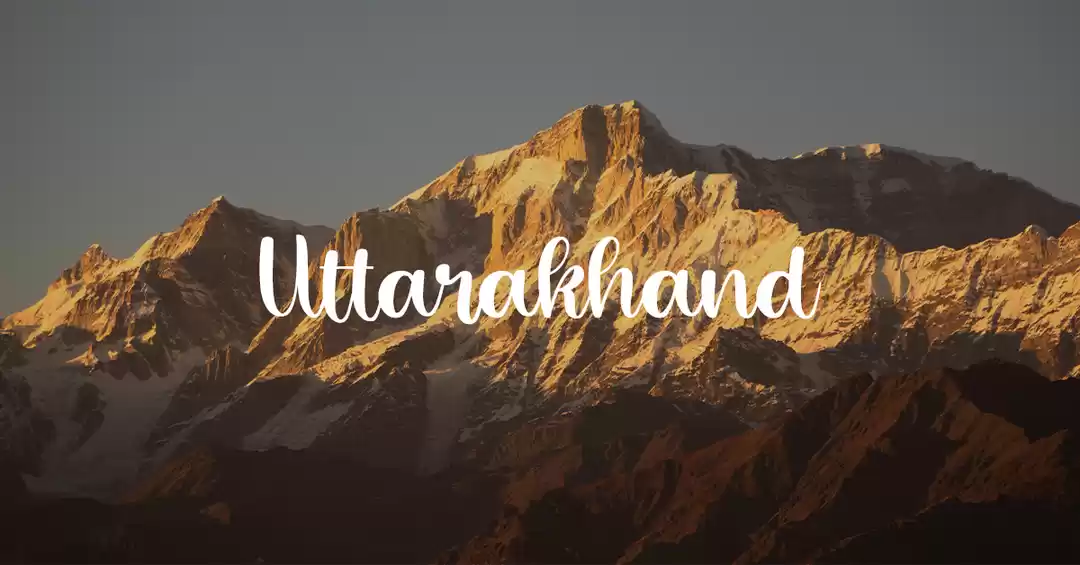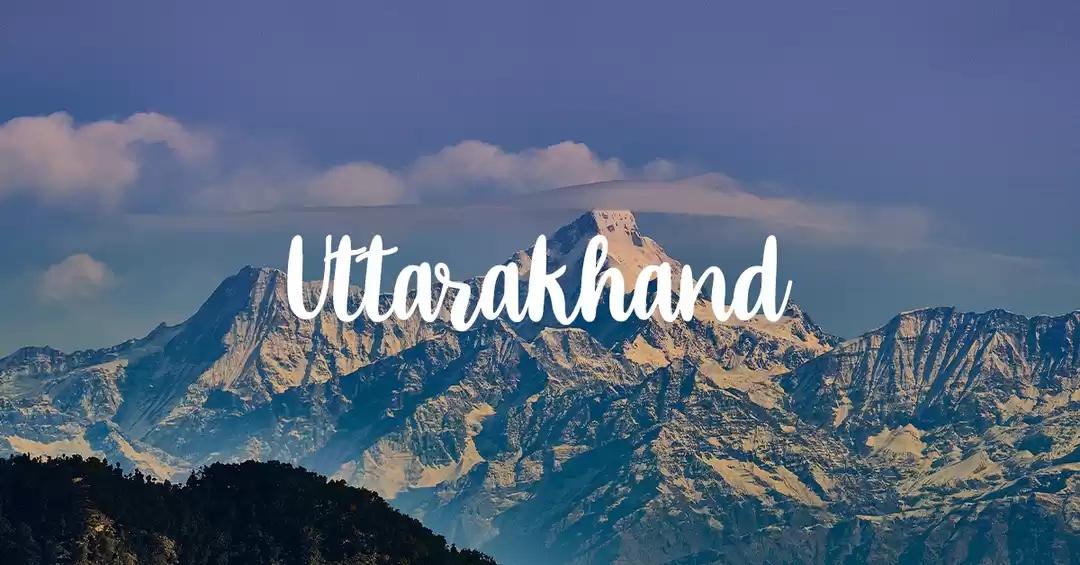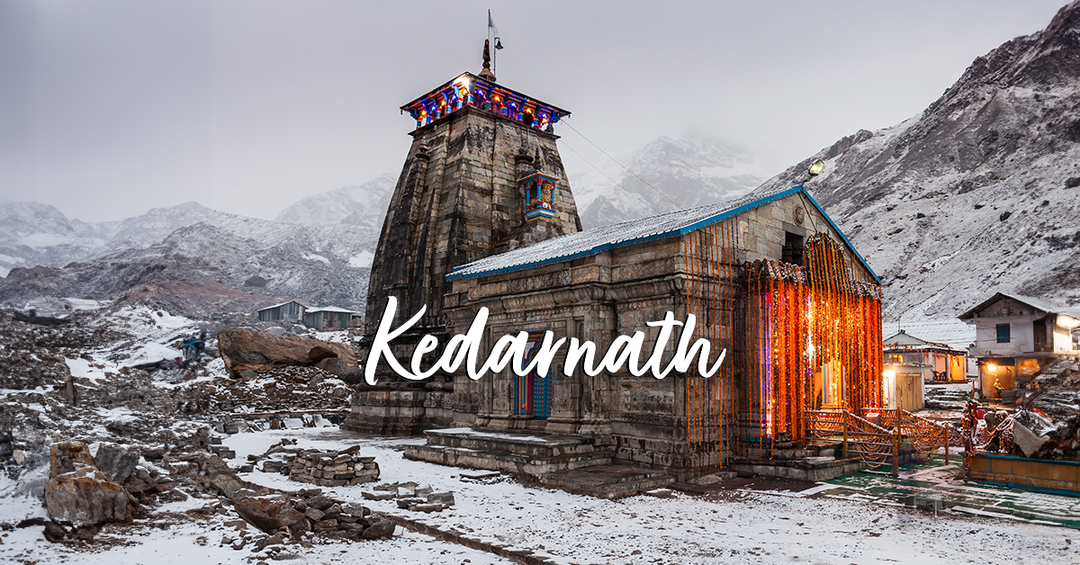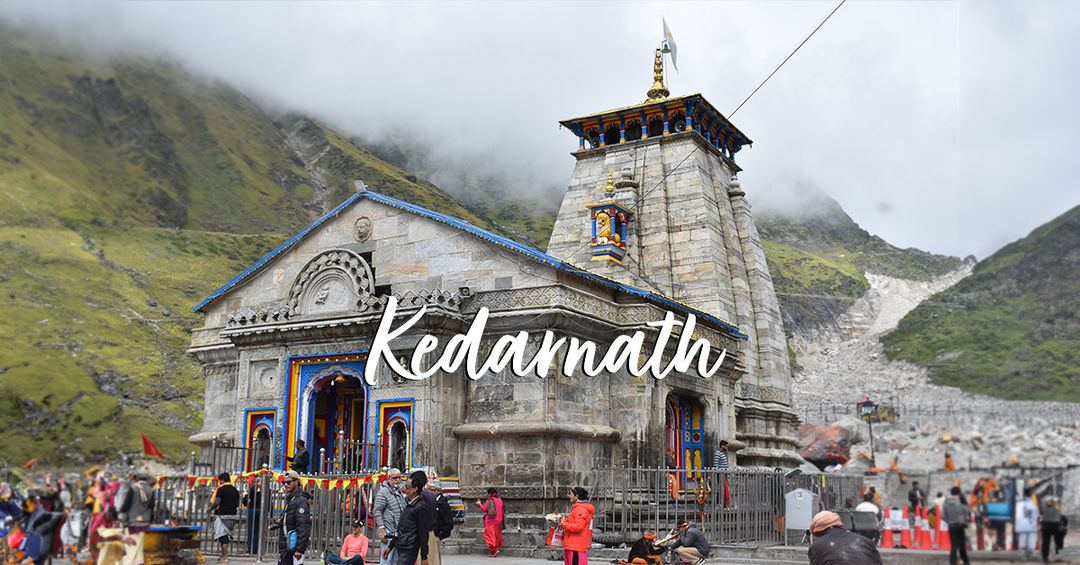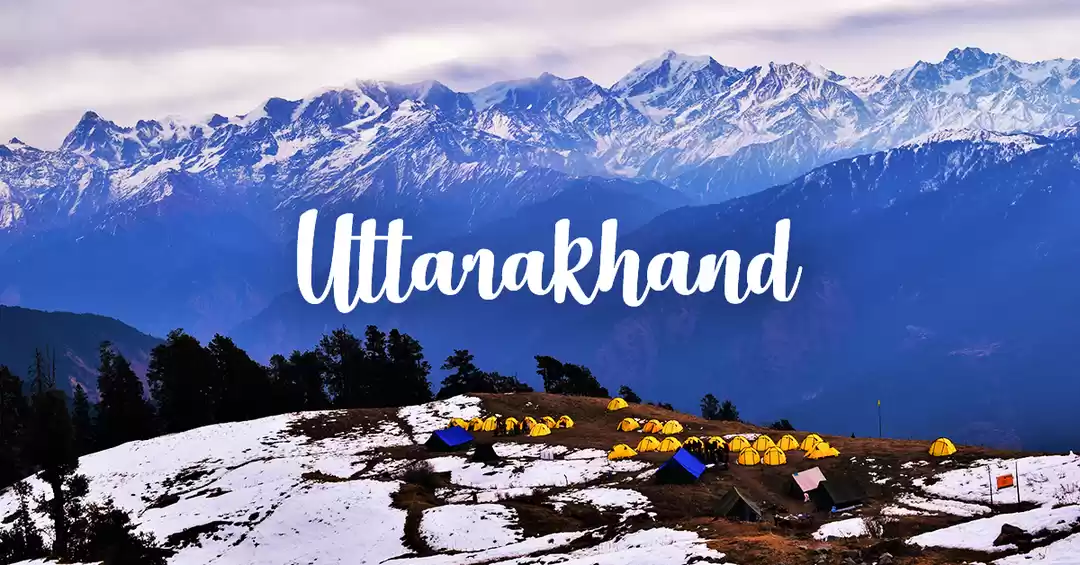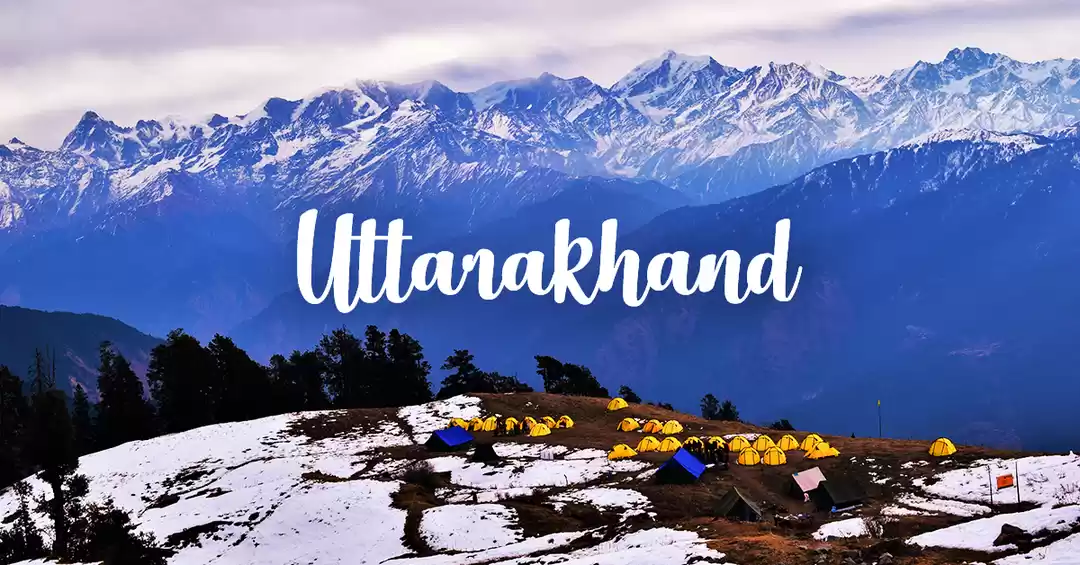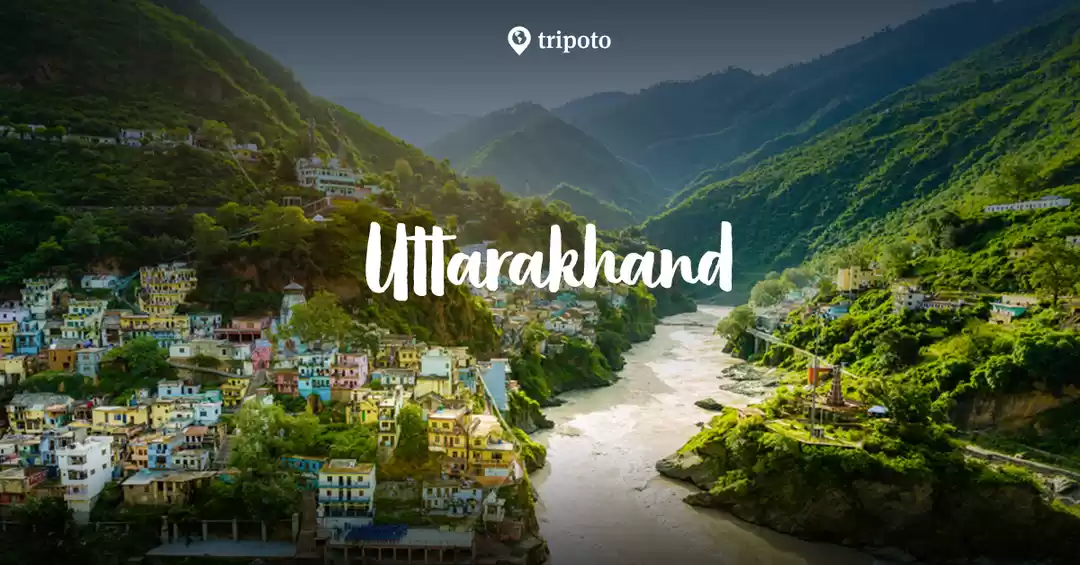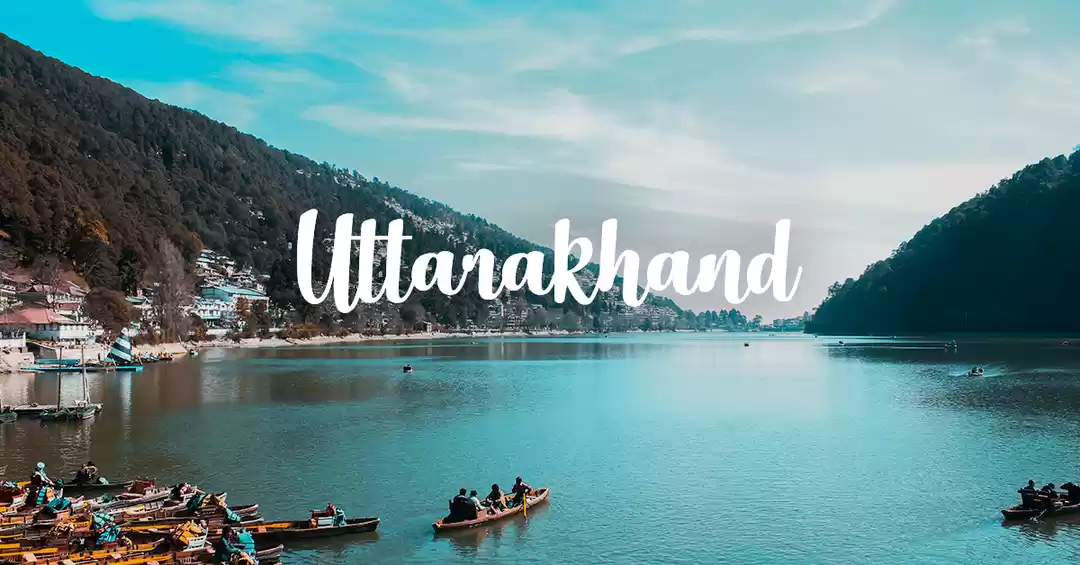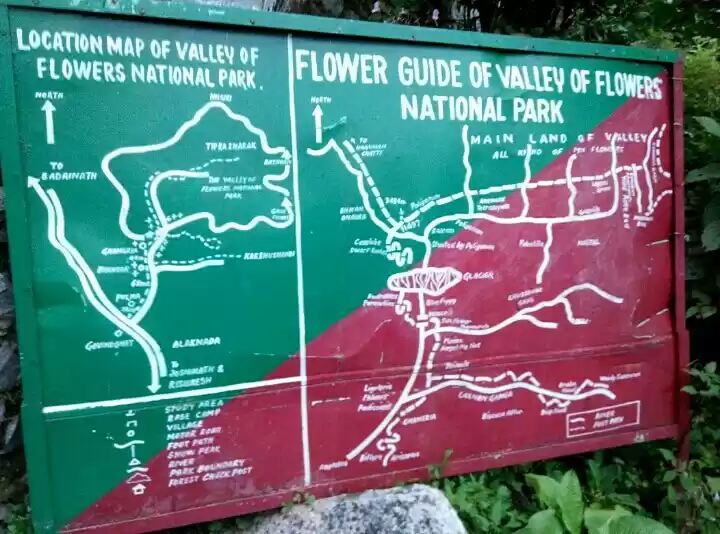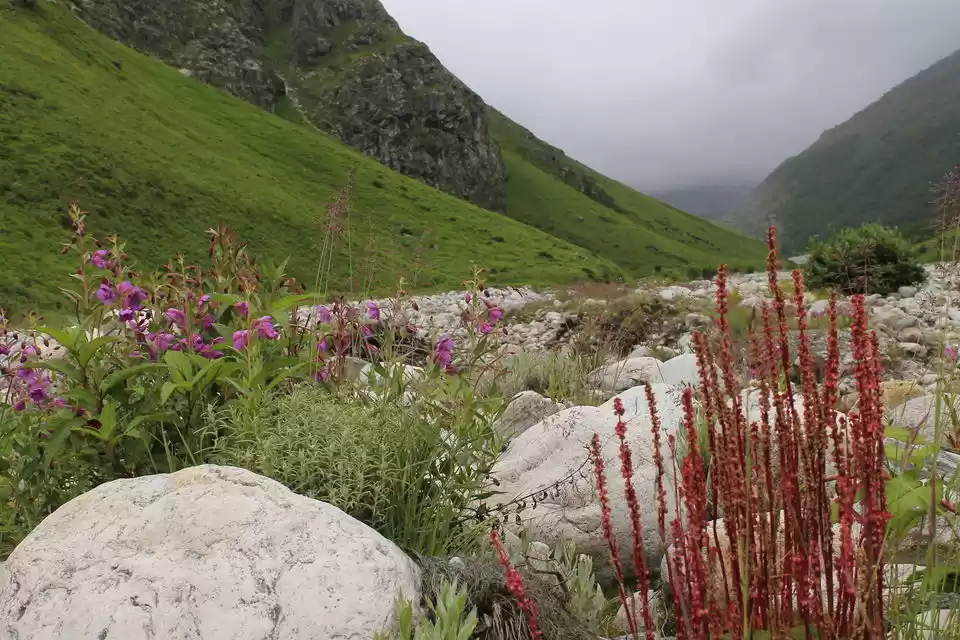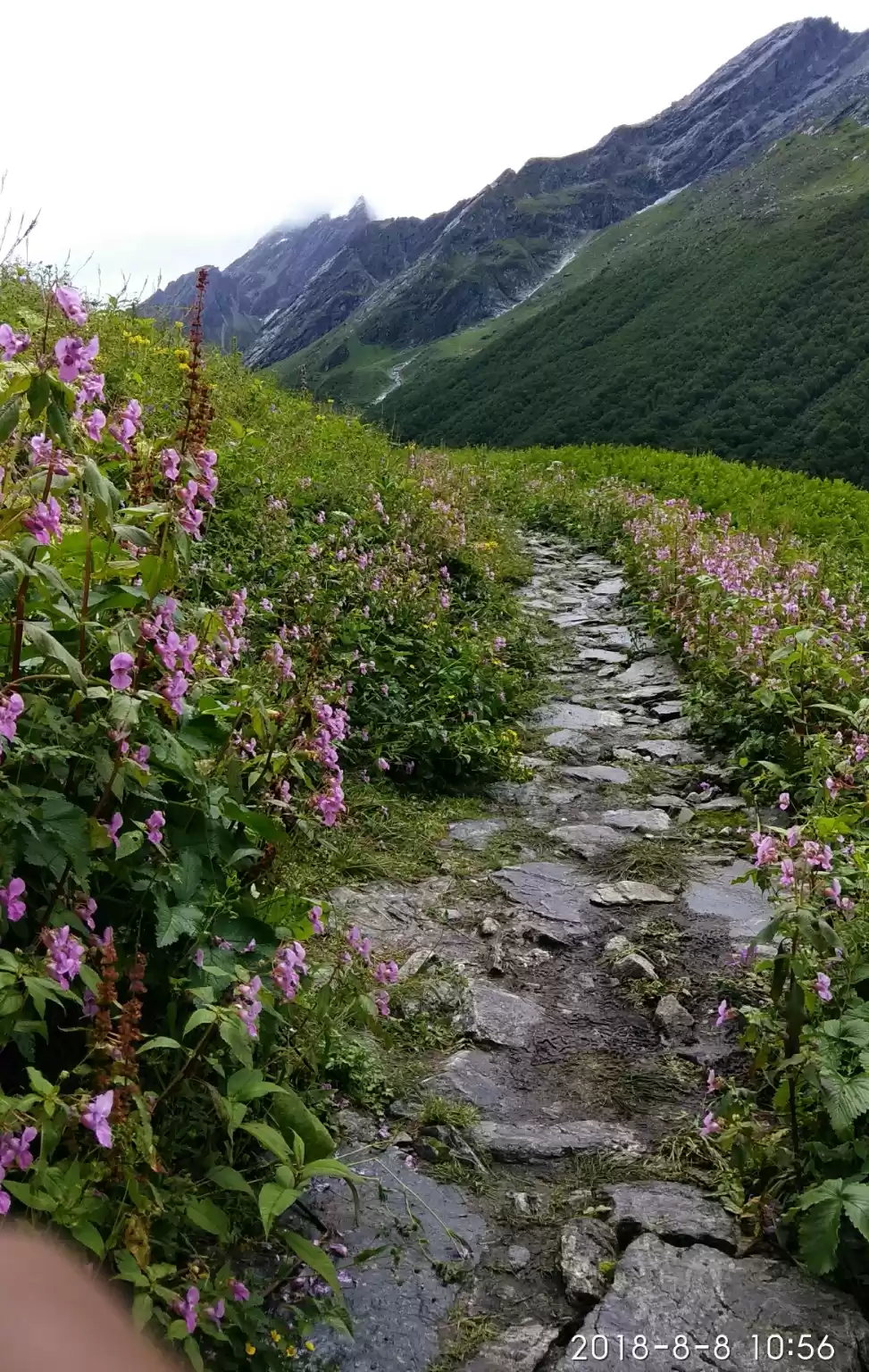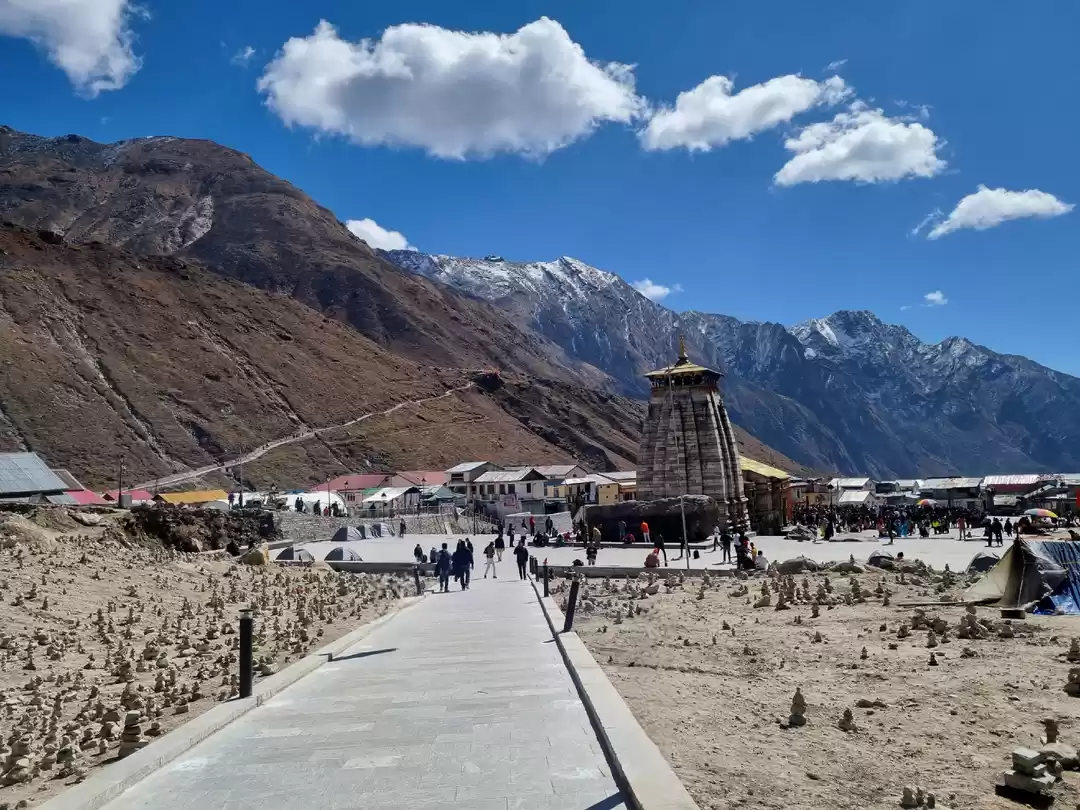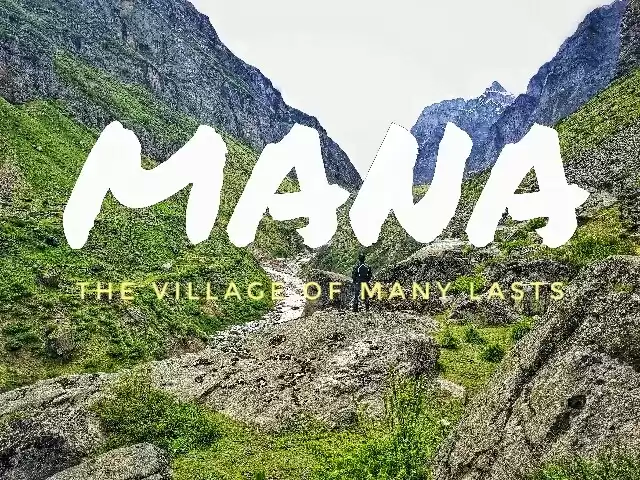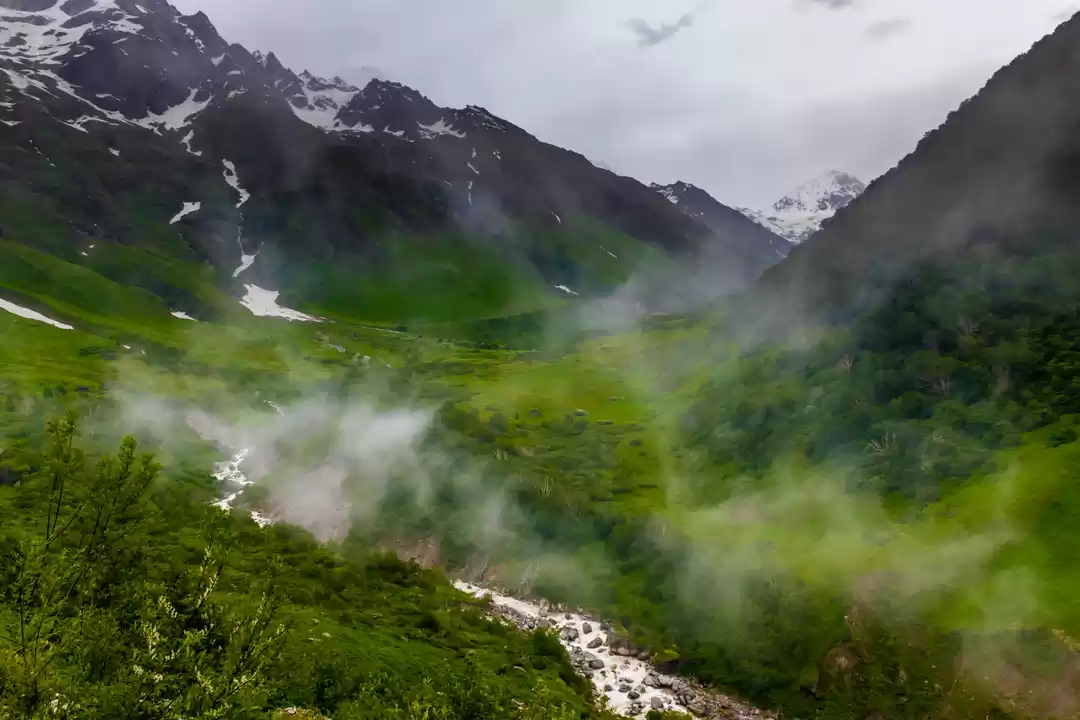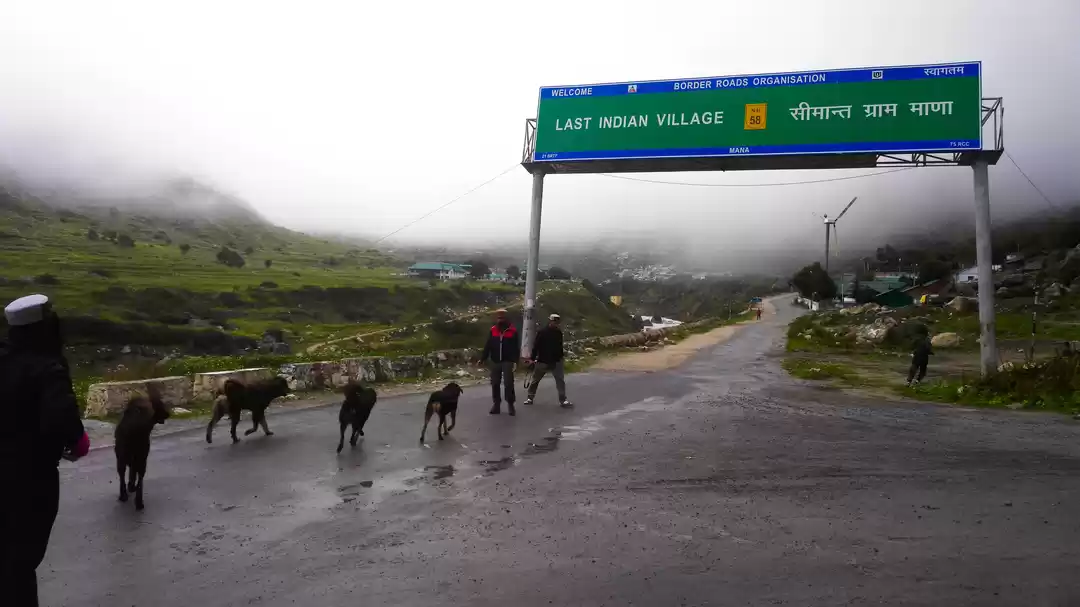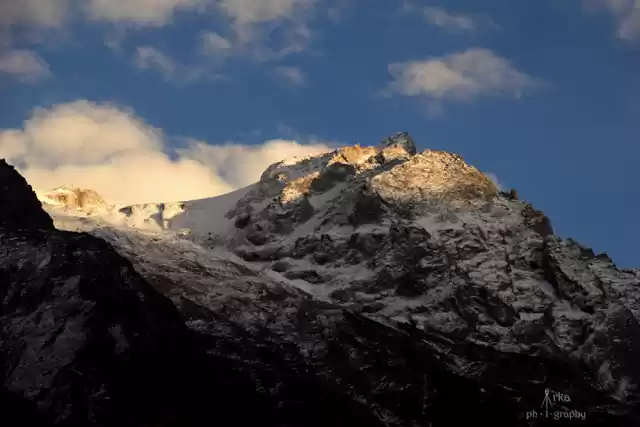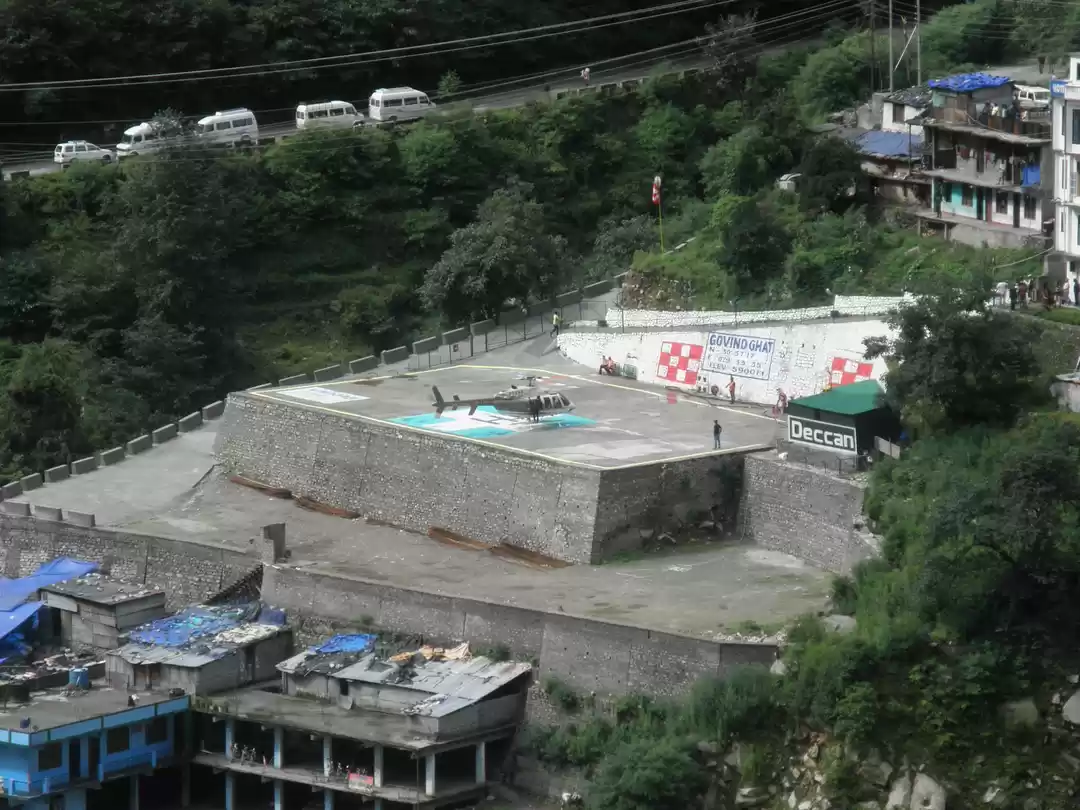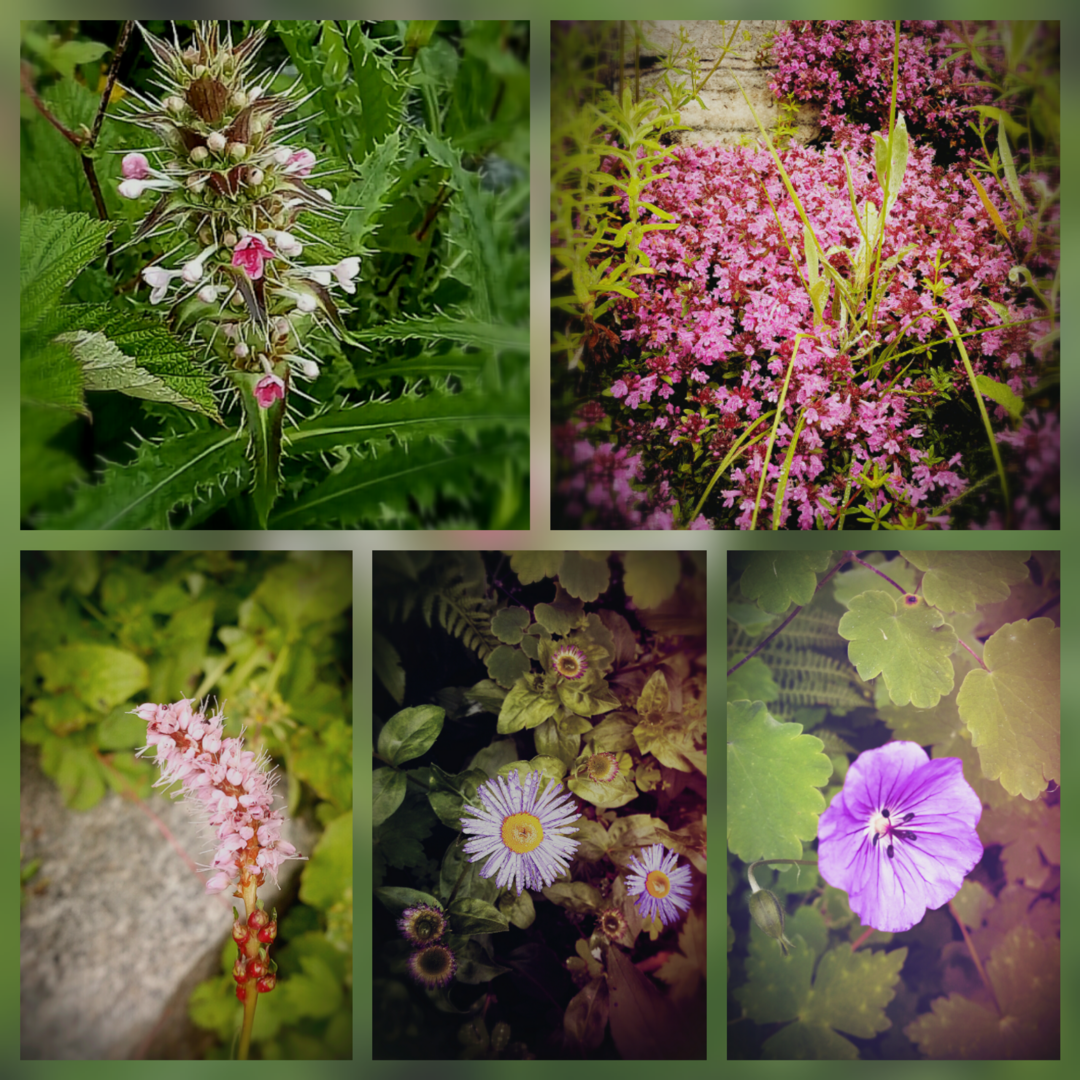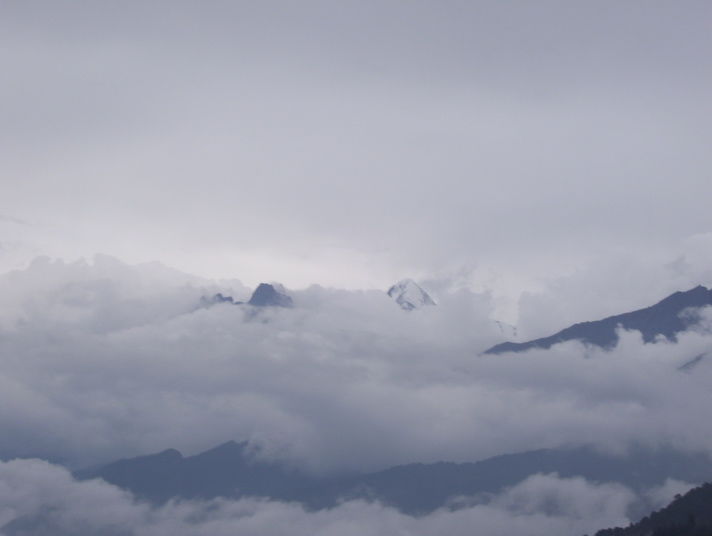
Chamoli - Valley of Flowers, Mana & Badrinath, Dec 20 to 22
Valley of Flowers (VOF). The very phrase conjures up images of undulating meadows, carpeted with flowers of different colours and hues, going up the side of a gentle mountain. Once you get to THE Valley of Flowers, it's not exactly that! Firstly, getting there is a 3.5Km trek from Ghangaria, through some stunningly beautiful ruggedly wooded mountains. You cross over from one mountain face to the other, and exit from a heavily wooded thicket to emerge into the valley - and yes, it is carpeted with flowers.
But the valley itself is to be seen to be believed. It's not just a meadow - it is hectare upon hectare of heart - achingly beautiful flora stretched over mountains, dotted with gurgling streams and even a glacier (or at least a frozen stream...)! Amazingly, once we got INTO the VOF, it wasn't cold - on the contrary, with the protection that the surrounding mountains offered, it was quite pleasant, so much so, that all the time we were in, we'd removed our jackets altogether.
We spent a very happy 6 hours exploring the VOF, and still covered barely 10% of all that was there! Thankfully, you aren't allowed to spend the night in the valley, to protect the delicate biosphere, and we had to head back by about 1400Hrs. But the sheer expanse of nature's creation is a memory that'll stay with me forever. I haven't ever come across such a surfeit of orchids - as far as the eye could see, they stretched away creating an unbelievable carpet of riotous colour, something out of a fantasy, too beautiful to be real! To this day, I don't know which emotion is stronger - the joy that I could see something so magnificent in my life, or the nagging sadness that nothing one sees from hereon can ever live up to this!
The next morning we headed back down towards Govindghat. The trek back took hardly any time compared to the hike up, and after having left at 0600Hrs, we were back down by 1200Hrs. After a quick and early lunch at the bustling Govindghat, we drove on towards Mana village. As you reach Mana, you are greeted with a sign that says 'The last Indian Village!' By some quirk of fate (or perhaps human intervention), Mana has managed to retain it's old world charm, with quaint stone and mud houses lining the mountain walls. Clean to a fault, the village had the ubiquitous children playing cricket (what else!) and gnarled old women weaving in their verandahs. Picked up a woollen sweater from the village shop - not for the need of it, but simply because of how coarse the wool felt to the touch!
As we meandered through the village, at the far end was a shop grandly announcing itself to be 'Bharat ki Aakhri chai ki dukaan'. Naturally, besides chai and maggi, he served glucose biscuits. After he obliged us with a picture, we had a cup of chai with glucose, and headed on to explore further. A short climb higher up into the mountains got us to a cave complex of sorts, the Vyas Gufa and the Ganesh Gufa. Legend has it that this is the spot where Rishi Ved Vyas dictated the Mahabharat to Lord Ganesha, with each of them perched in their respective caves. Whether there is any truth to those legends or not, the caves themselves have an aura to them. Unlike a deserted mountain cave, there is a presence of sorts, like a purposeful energy to it, that one feels once in there.
After spending a lazy afternoon exploring Mana, we headed towards the source of the Saraswati river. 'Source' is a misleading word, since this refers to the starting point where the river is visible for the first time, for a distance of about 100 meters, before she disappears underground again. Of course, you may believe the legend that Saraswati was too noisy for Rishi Vyasa's liking, so he banished her underground and that's where she stays to date. Or you may not. Fact is, the river is underground, barring the 100 odd meters that she can be see for over here!
We spent the night at another Birla guesthouse, around midway between Mana and Badrinath temple. As expected, the place was basic, functional, clean and just what the doctor ordered! Next morning we headed to Badrinath temple. There is enough and more written about Badrinath, and suffice to say, whether you are driven by faith, curiosity or just happen to be visiting it, you wont come away disappointed! Several years after I visited Badrinath, I happened to read a commentary on the life and works of Adi Shankaracharya. The Metaphysical side of the treatise aside, it has a mention that Shankaracharya found the statue of Badrinarayan (the deity of Badrinath) submerged in the Alaknanda river, which he retrieved and installed at the temple. The temple itself at that time was an abandoned Buddhist shrine, WHICH was the original Badrinath temple. Apparently the idol was hidden in the river to protect against raiders, and Shankaracharya was aware of this fact since there is a mention of the temple in the Skanda Puran and the Vishnu Puran. In the mid 30's when British historians had dated the Ramayan to be around 2000 years old, Acharya Chandrashekharendra Saraswati, the then seer of the Kanchi mutth had famously congratulated them saying '...if you keep persevering, I am sure you will find the true age of the Ramayana'. Point is, the Purans predate the Ramayan by several centuries (if you believe Western historians) or millennia (if you believe Hindu mythology) - either ways, the Badrinath shrine is way older than what we've been taught!
Eventually we headed back towards Delhi, retracing our route through Devprayag. The entire return journey is a haze in my mind, soaked as it was with memories of the last few days - be it Hemkund Sahib, the Valley of Flowers, Mana Village or Badrinath temple, each had left an indelible mark on our souls. I've read about a lot of people who say the mountains have changed them - we were returning from the lap of the Himalayas, not as changed persons, but as individuals who had discovered unknowns facets of their own personalities, humbled, uplifted, liberated, euphoric, becalmed and at peace. Clearly, there was only one thing that remained to be done. Come back to the mountains!

